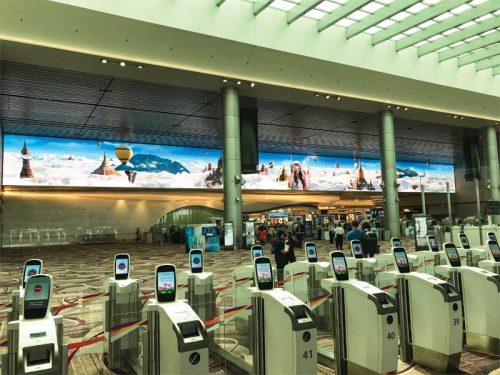Servicizing phases out obsolescence

Many digital displays are installed only for their esthetic value rather than revenue-generating potential, but this approach is typically adopted by larger organizations that can afford to do so.
As mentioned earlier, companies that have servicized their products are financially compelled to care about their customers. Over the course of these relationships, visualization products will age out of prime usefulness as superior products are invented and sold. Technological evolution is inevitable and unceasing, but companies that truly care about their customers explore avenues to safeguard older customers against future obsolescence.
Creating and delivering upgrades
Not only do manufacturers need to continue developing new technologies on their own, they need to consistently make these upgrades available to their customers. When a customer buys a display upfront, they are often stuck with the product. However, when they acquire a servicized solution, they can improve what they pay for over time.
Further, manufacturers need to design build their solutions with interchangeable subcomponents that can be swapped in and out for seamless maintenance.
Manufacturing uniform plug-and-play solutions
Ensuring continued performance from a display and avoiding obsolescence requires an understanding of how, why, and when a display might malfunction, along with built-in safeguards to quickly remedy potential issues. When the display solution is built from interchangeable and interlocking LED boards, customers can plug in a new one at any time if the old one malfunctions. This minimizes downtime and allows display owners a ready-replacement at their disposal.
While portions of an LED can be replaced, this is often not the case for liquid crystal displays (LCDs). Individual LED boards are smaller and cheaper per unit than most LCD display screens. This is why LED customers often have spares. If an LED customer orders
a replacement, they are likely to get one. Most LED manufacturers continue to make older display models as they create new ones but LCD companies may not. Uniform manufacturing standards are a less obvious factor in display servicization, but they make maintenance, repair, and upgrading more fluid over time. This wards off obsolescence and streamlines the regular enhancements a customer expects when they buy a servicized product.
Backing up everything with a warranty
A strong warranty needs to be in place to protect customers from any routine malfunctions or declines in performance. This is crucial to a future-proofed servicized solution. A warranty that covers the entire display, from corner to corner, including all parts and controller devices, effective from the date of purchase can be a game-changer for businesses. Not only will a warranty build a customer’s trust in the manufacturer but will also guarantee future business.
Joe’ Lloyd is vice-president of NanoLumens’ global marketing and business development and recent recipient of the Technology Association of Georgia’s Marketing Executive of the Year award. She is a sought-after speaker, outspoken proponent of social selling, networking, and public relations, and is dedicated to providing marketing with a strong, dependable return on investment (ROI). This article is based on a white paper she prepared for systems integrators and their end users. For more information, contact her via e-mail at jlloyd@nanolumens.com.





